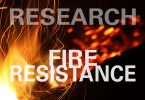The aim of this paper is to find out new alternative materials that respond to sustainable development criteria. For this purpose, an original utilization of straw for the design of lightweight aggregate concretes is proposed. Four types of straw were used: three wheat straws and a barley straw. In the present study, the morphology and the porosity of the different straw aggregates were studied by SEM in order to understand their effects on the capillary structure and the hygroscopic behavior. The physical properties such as sorption-desorption isotherms, water absorption coefficient, pH, electrical conductivity and thermo-gravimetric analysis were also studied. As a result, it has been found that this new vegetable material has a very low bulk density, a high water absorption capacity and an excellent hydric regulator. The introduction of the straw in the water tends to make the environment more basic; this observation can slow carbonation of the binder matrix in the presence of the straw.
Authors: Bouasker, Marwen; Belayachi, Naima; Hoxha, Dashnor; Al-Mukhtar, Muzahim; Bouasker, Marwen; Belayachi, Naima; Hoxha, Dashnor; Al-Mukhtar, Muzahim; 11.04.2014



